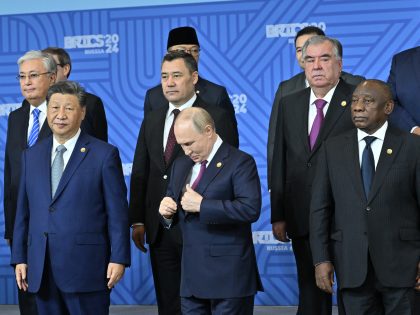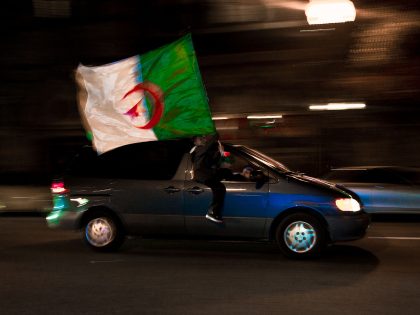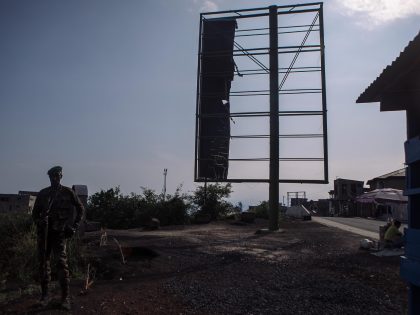Pieter Hugo on ‘political correctness’

Pieter Hugo, the critically acclaimed South African photographer, has done an interview with Guernica (H/T Glenna Gordon) in which he seems to be taking issue with criticisms of his work, especially the “Nollywood” series: “It’s quite scary when academics start dictating to artists that they should be politically correct or follow certain rules of behavior — which means we have to start making dishonest work, which means it becomes didactic and propaganda in nature.”
In the United Kingdom (where I’m based), the only people who usually invoke “political correctness” are the right-wing press, clamouring about the censorship they would joyfully impose on their enemies, so we were surprised by Hugo’s accusation.
The direction and details of this outrage are worth close attention. (And we feel compelled to write back since we blogged about the Nollywood series here and here; those posts include comments by our spirited readers.)
Hugo seems to reject the content and nature of academic art criticism. In fact, he dictates that we should reject this relationship. Academics must not impose their readings on artworks.
It is curious that Hugo assumes that attention to his work by academics is hierarchical, as if, by reading his images, we become not only his judge, but his superior. Curious primarily as Hugo’s work seems unusually committed to the idea of forcing his viewers to confront ‘problematic’ images. That he expects us to do so without being critical, judging the intent of the work according to its content and context, is baffling. No one takes a position of superiority in relation to this work, rather we occupy different positions in related fields — chronologically different in time and place: he makes the images, we all ‘read’ them.
The second assumption worth questioning is that the academics who criticise his work wield mysterious — and, in his mind, unnecessary — power. For an artist so riotously successful as Hugo, this is a strange complaint. (Even AIAC, from our lowly blog perch, has thrown flowers in Hugo’s direction.)
The main idea Hugo pushes is that this criticism seeks to force his practice into ‘dishonesty,’ ‘didacticism’ or ‘propaganda’. This charge, in which the work’s audience — and more particularly the professional reader — is singled out as the stultifier of the artistic ego, is remarkable, and deserves closer attention still. Hugo’s anxiety, that criticism might induce the collapse of the integrity of his own work into ‘propaganda’ — presumably from a racially ‘correct’ politics of the image which his work rejects — is telling. For him, presumably, the artist demands the freedom of his (deeply political) images to be read un-politically. Which is to say that he asks us to imagine that his work couldn’t have been different, that it is incapable of change.
In making such a charge, the artist blames his critics for the doubt he feels:
I find that very troublesome, very problematic. It’s taken me a long time to figure out why it affected me so deeply. It really upset me. It was never my intention in any way.
It’s great to hear Hugo is sufficiently attuned to the world that he suffers the lash of the academic tongue with such intensity. Such sensitivity towards criticism surely marks the potential of a great artist. What is odd about the statement above is, however, that Hugo fails to specify what exactly it is that upsets him. Look closely and you’ll see that Hugo’s argument jumps from disagreement (‘troublesome’, ‘problematic’) with the dark forces of political-correctness-mongers to the self-pitying complaint (‘it really upset me’). It seems Hugo is not upset by the fact that people think his work is potentially damaging, but the reactionary idea that the phantasmic armies of ‘political correctness’ are being mobilised against the heroic defenders of Art and Freedom.
It is understandably upsetting to be accused of political incorrectness, but Hugo seems to have come full-circle: first, claiming to have performed a necessary and painful self-scrutiny, then passing over any resultant doubt or anxiety, then returning to criticise his critics with this attack. He has already banished the idea that his work might reflect and sustain desires within himself which others find unappealing; so why should the art, or the artist himself, consider change?
To quote from Theodor Adorno at this point seems provocatively ‘academic’, and so be it. In Minima Moralia, the German philosopher claims that, for writers “[w]hat is let pass as a minute doubt may indicate the objective worthlessness of the whole.” This Promethean task Adorno demands of writers must be no less extensive for photographers making work as sophisticated as Hugo would no doubt like to be. In view of this, the alternative to Hugo’s melancholy, is doubt. Those questions he calls ‘troublesome’, ‘problematic’, ‘affecting’ or ‘upsetting’, should not induce ‘dishonesty’, harmful introspection or vulnerability to making (or becoming) ‘propaganda’. Hugo must have searched for what critics see in his work — he surely wouldn’t have been so upset if he hadn’t — his scrutiny must have been insufficient. Until this artist can locate within his work that which his fiercest critics see, the whole exercise may be worthless.



















